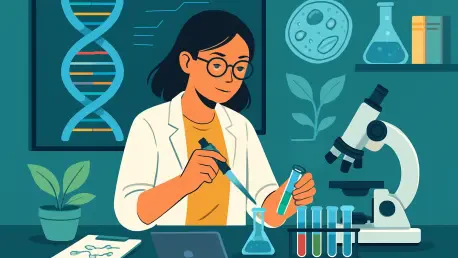Today, we’re thrilled to sit down with Ivan Kairatov, a renowned biopharma expert with extensive experience in research, development, and innovation within the biotechnology industry. With a deep understanding of the latest technologies and trends, Ivan offers invaluable insights into the world of biomanufacturing and education. In this conversation, we’ll explore the dynamic landscape of biotechnology programs, the importance of hands-on learning, and the skills needed to thrive in this field. From student-driven initiatives to real-world applications, Ivan shares his perspective on how aspiring professionals can prepare for impactful careers.
How did you first become interested in biotechnology, and what excites you most about its potential today?
My interest in biotechnology sparked during my early years in university when I realized how science could directly improve lives through medical and industrial applications. I was fascinated by the idea of engineering biological systems to solve real-world problems. What excites me most today is the rapid pace of innovation—technologies like CRISPR and synthetic biology are opening doors we couldn’t have imagined a decade ago. The potential to address global challenges, from disease treatment to sustainable manufacturing, is incredibly motivating.
Can you share your thoughts on the importance of student-led initiatives like bio manufacturing clubs in shaping future professionals?
Student-led initiatives are absolutely critical. They provide a space for hands-on learning and collaboration that you can’t replicate in a lecture hall. Clubs like these allow students to experiment, fail, and learn in a low-stakes environment while building teamwork and leadership skills. They also foster a sense of community and passion for the field, which is essential for sustaining a career in biotechnology where perseverance is key.
What role do events showcasing student work, such as displays of lab creations, play in inspiring others to explore biotechnology?
These events are fantastic for demystifying biotechnology. When people see tangible items like agar plates or other lab products, it makes the science feel accessible and real. It’s not just abstract theory—it’s something you can touch and understand. For students or visitors who might be on the fence about the field, these displays can spark curiosity and show the direct impact of biotech work, whether it’s growing microorganisms or contributing to larger research goals.
Why are traits like patience and discipline so vital for anyone pursuing a career in biotechnology?
Biotechnology is a field of trial and error. Experiments often fail, and progress can be slow—sometimes taking months or years to see results. Patience keeps you grounded during those setbacks, while discipline ensures you follow protocols meticulously, as even small errors can derail an entire project. Consistency ties it all together; showing up every day with focus is what ultimately leads to breakthroughs. Without these traits, it’s easy to get frustrated and give up.
Can you share a personal story where patience or discipline made a difference in a project you were involved with?
Absolutely. Early in my career, I worked on a project to develop a new microbial strain for industrial use. We faced countless failures—cultures wouldn’t grow, or the yields were too low. It took over a year of tweaking variables and repeating experiments before we saw progress. Staying patient and sticking to a disciplined approach of documenting every step allowed us to finally pinpoint the right conditions. That experience taught me the value of persistence more than any textbook ever could.
How do practical, large-scale projects differ from smaller lab experiments in preparing students for the biotech industry?
Small lab experiments are great for learning fundamentals, but they often lack the complexity of real-world applications. Large-scale projects introduce students to challenges like scalability, strict deadlines, and quality control—issues that are central to industry work. For example, producing something like agar plates in bulk for distribution requires coordination, precision, and an understanding of logistics, which are skills directly transferable to a professional setting. It’s a whole different mindset compared to a one-off experiment.
What are some of the biggest challenges students face when transitioning from academic labs to industry roles, and how can programs help address them?
One major challenge is adapting to the pace and accountability of industry. In academia, there’s often more flexibility with timelines, whereas industry demands efficiency and results under tight schedules. Another hurdle is understanding regulatory and compliance standards, which are critical in biopharma but not always emphasized in school. Programs can help by integrating real-world simulations, offering internships, and teaching soft skills like communication and project management alongside technical training.
How do partnerships between educational programs and local communities or schools benefit both students and the broader ecosystem?
These partnerships are a win-win. Students gain practical experience by working on projects with real impact, like supplying materials to local schools, which builds their confidence and resume. Meanwhile, the community benefits from cost-effective resources and exposure to cutting-edge science, often inspiring younger generations to pursue STEM fields. It creates a cycle of learning and support that strengthens the entire ecosystem and fosters a culture of collaboration.
What is your forecast for the future of biotechnology education and its role in driving industry innovation?
I’m incredibly optimistic about the future of biotech education. As technology evolves, I see programs becoming even more interdisciplinary, blending biology with data science, AI, and engineering to prepare students for emerging fields like personalized medicine and biofabrication. Education will play a pivotal role in driving industry innovation by equipping students with adaptable skills and fostering creativity. I believe we’ll see tighter integration between academia and industry, with more real-world projects and partnerships shaping the next generation of leaders in this space.









